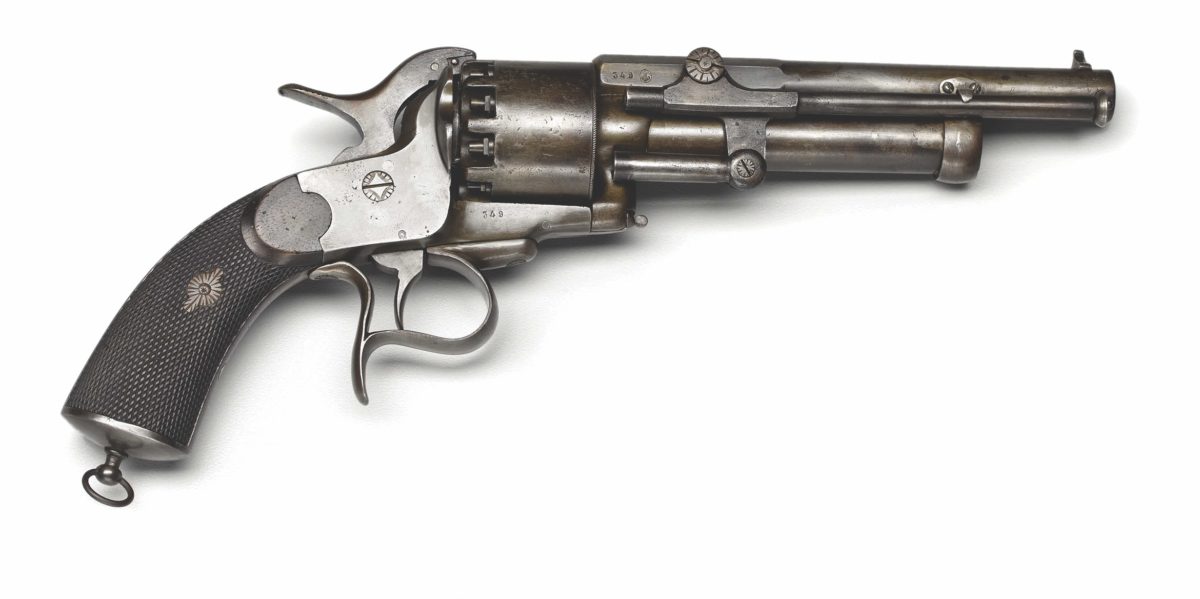The LeMat revolver was one man’s innovative effort to give European and American soldiers the ultimate in single-handed, close-quarters firepower. Patented in 1856 by Jean Alexandre LeMat, a Frenchman living in New Orleans at that time, the revolver was a cap and ball muzzle-loader featuring a central smoothbore shotgun barrel, which also served as the axis for an enlarged revolver cylinder, typically .42-cal, that fired down a longer 6.75-inch parallel barrel. The shooter could switch between the shotgun and the revolver by adjusting a pivoting striker on the hammer.
The weapon’s impressive firepower potential attracted an 8,000-unit order from Confederate forces during the American Civil War, although only about 2,500 of them were delivered, with most going to the Confederate army’s cavalry and smaller numbers to the Confederate navy. The latter also ordered 2,000 smaller “Baby LeMats,” with a shorter 4.5-inch revolver barrel in .32-caliber, though only about 100 of these were made.
For all its ingenuity, the LeMat was an awkward and expensive weapon. Its low distribution and single-action design meant that it was soon superseded by new generations of more practical double-action revolvers. LeMat subsequently produced both pinfire and center fire cartridge versions—and even a revolving carbine—in a vain effort to find commercial success.
The combat impact of the LeMat during the Civil War may have been limited, but the gun did have some famous adopters, including Gen. P. G. T. Beauregard (who was also LeMat’s cousin and business partner), Maj. Gen. J. E. B. Stuart and Lt. Gen. Thomas J. “Stonewall” Jackson. Today LeMats are therefore highly collectible, their value heightened by their rarity.





